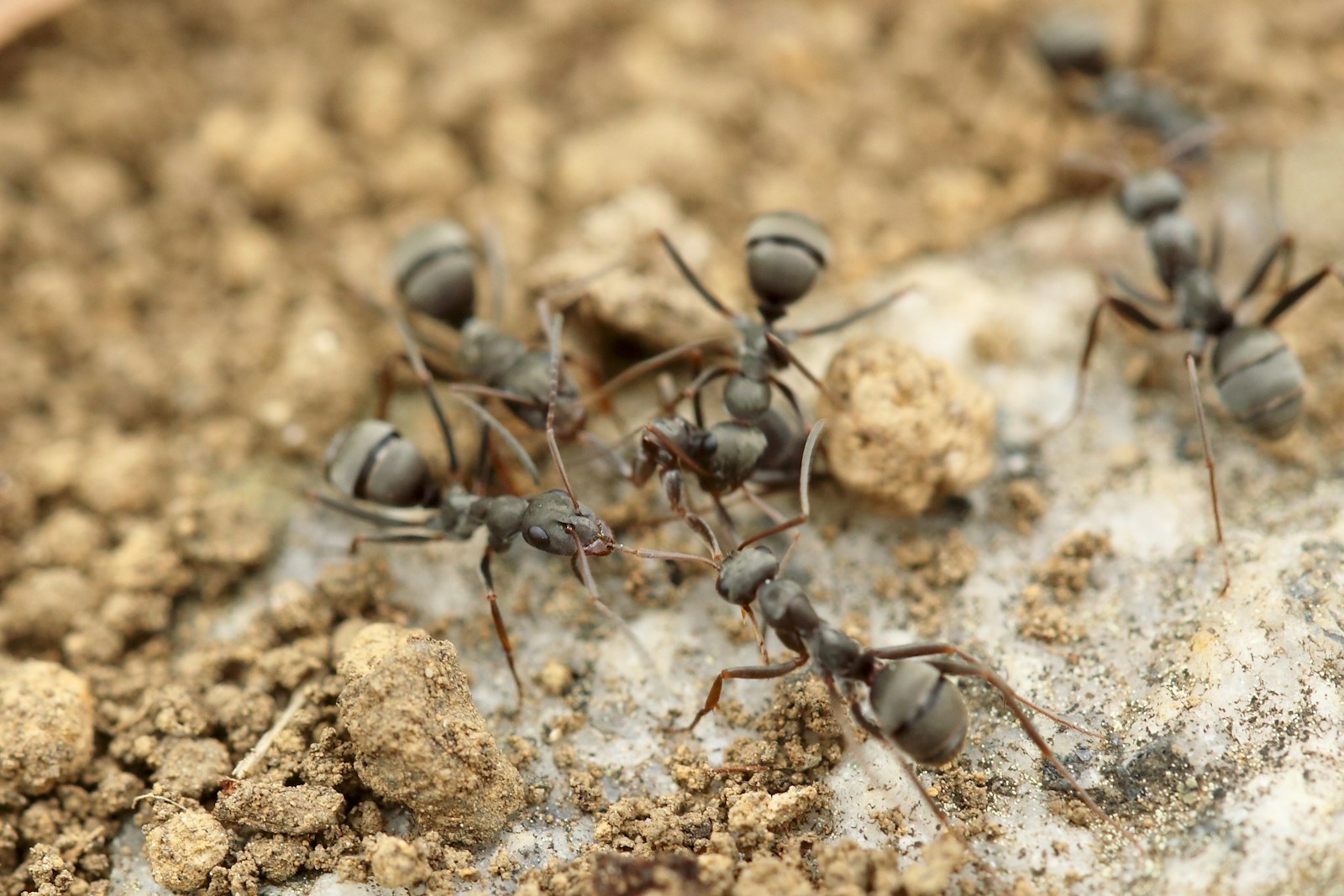(Your friendly, dirt-under-the-nails garden-nerd guide to protecting your plants)
There’s something peaceful about digging in your garden, seeing sprouts push through the soil, watching bees visit blooms. Until you notice little ant trails snaking through your plants. Tiny piles of dirt. Suddenly, your garden feels less calm and more compromised.
Ants in the garden aren’t always bad. Some help aerate soil or feed birds. But when they burrow near roots, tend sap-sucking pests like aphids, or build hills around your beds, they can undermine your work. So our goal isn’t war—it’s giving you the upper hand. We’ll make your garden less welcoming to the ants causing trouble, so your plants thrive and your soil stays steady.
Step 1 – Understand Why Ants Choose Your Garden
Ants are drawn by three things: food, shelter, paths. Your garden may offer all three.
- Food: spilled sugar, fallen fruit, aphids producing honey-dew.
- Shelter: bare soil, mulch, loosely stacked rocks, tunnels near roots.
- Paths: easy access from nearby wood lines, garden edges, warm sunny soil.
When you recognise what’s attracting them, you can re-design the space so we invite the plants in—not the ants.
Step 2 – Remove Their Attractions
The easiest wins often happen here. Remove what draws the ants first.
Eliminate food sources:
- Sweep up fallen fruit, ripe vegetables, or dripping tree sap.
- Don’t leave sweet liquids (sodas, syrup) near your beds.
- Check for aphids on plant stems—ants may “farm” them for honey-dew.
- Move bird-feeders or feeders for pets away from garden edges; clean up spilled seed.
Reduce shelter & easy tunnels:
- Clear piles of rocks, bricks, old plant pots near beds. These give ants footholds.
- Mulch carefully—deep mulch with untouched gaps and bare soil beneath invites tunnelling.
- Keep garden edges trimmed and tidy; dense ground-cover right next to a bed often hides ant nests.
When you remove easy snacks and soft hideouts, you make the garden less comfortable for ants. That means it favours your plants instead.
Step 3 – Build Barriers & Exclusion
Sometimes you need a physical buffer. These methods stop ants from reaching the most vulnerable zones.
Surface barriers:
- Sprinkle food-grade diatomaceous earth around the edge of beds and near ant trails. The fine powder dries out insects as they cross it.
- Circumference beds or plants with a line of cinnamon, coffee grounds, or finely crushed eggshells. Ants dislike crossing these boundaries.
Soil barriers:
- When planting sensitive crops or bulbs, dig a little deeper or line the hole with fine mesh so ants can’t tunnel upward.
- Around containers: place pots on saucers filled with water (a “moat”) so crawling ants can’t easily climb up.
Tunnel disruptors:
- If you spot an ant mound or entrance, you can flood the area with water carefully (be mindful of nearby plants) to collapse tunnels.
- Use a homemade ant-bait with sugar and borax placed near ant trails. Worker ants take it back to the nest, which helps reduce the population.
Barriers don’t get all the glory—but they often win the long game because they stay put and make entry difficult.
Step 4 – Use Smart Repellents & Disrupt Their Paths
Think of this layer as your “annoyance deterrent.” They can’t get in easily, and everything smells or feels wrong to them.
Scent deterrents:
- Mix equal parts white vinegar and water, spray it along known ant trails and around garden beds. The strong smell interferes with their scent-lines.
- Place cotton balls soaked in peppermint oil, citrus oil, or clove oil near areas of ant activity. Ants dislike those smells.
- Scatter used coffee grounds, citrus peels, or sprinkle cinnamon powder around plant bases or garden edges—these disrupt ant trails.
Taste deterrents & baiting:
- If the baiting route feels right for you, mix sugar (to attract) with a little borax (to harm) and place in small covered containers near ant entries. The ants carry the mix back.
- Important: keep baits out of reach of pets and children.
Rotation matters:
Ants are clever. If the same thing sits out week after week, they learn the pattern. Rotate between barriers + scent sprays + baiting so the garden feels unpredictable to them.
Step 5 – Integrate Landscaping for Prevention
Your garden design can be your assistant. Here’s how to setup your beds and borders to favour you.
Plant deterrent herbs & plants:
- Herbs and plants that ants tend not to like include mint, lavender, wormwood, tansy, and rosemary. Plant these along the edges or around vulnerable beds.
- These plants don’t guarantee ant-freedom, but they raise the comfort bar for ants.
Avoid bare soil near plant bases:
- Bare soil invites tunnelling. Use a layer of mulch (but keep it thin and changed yearly) or decorative gravel.
- For garden paths adjacent to beds, select firm surfaces rather than loose soil that ants can exploit.
Zones near woodlines or borders:
- If your garden edge is near wooded area, verge, or shrub-line, keep a clean strip (bare ground or low gravel) between the wild edge and the cultivated beds. This “buffer zone” interrupts ant migrations.
When your garden layout includes ant-hostile features, you’re reducing effort over time. You’re no longer just reacting—you’re designing for prevention.
Step 6 – Monitor & Adjust Regularly
Gardening isn’t a one-and-done effort. Defences must be inspected, adapted and reinforced.
- Walk your garden weekly and scan for new ant trails, spotting any fresh bustling lines of workers.
- After heavy rain, check scent-spray zones and barriers—many are washed away or disrupted by watering. Reapply or refresh as needed.
- At the start of every season, review bed edges, mulches, and landscape transitions. Adapt any new plantings or changes so your defences carry forward.
- If you spot a mound or active nest that keeps rebuilding despite your efforts, dig a little deeper: perhaps there’s an overlooked tunnel entrance or a hidden food source.
Your vigilance pays off. The sooner you catch emerging ant activity, the less damage they’ll do and the less effort your plants will demand.
Step 7 – When to Accept Some Ants & When to Act Big
Not all ants are bad. Some aerate soil, decompose debris, and help pollinators. So know when to tolerate and when to act.
Tolerate when:
- The ants are not damaging plants, not building hills in beds, not tending aphids or tunnelling under roots.
- The colony is small and in a non-critical area of the garden.
Act when:
- Ants are visibly harming plants, gouging holes around root zones, or protecting pest insects like aphids.
- There are large mounds in main flower or vegetable beds making management difficult.
- The species is aggressive (fire ants, carpenter ants) or you suspect structural risk.
In other words: Use your judgement. Aim for plant health and ecosystem balance, not absolute elimination of all ant life.
Step 8 – Seasonal Care & Garden Rhythm
Let’s loop this into your garden calendar so these tasks feel natural.
Spring:
- As you prep beds, apply fresh mulch or gravel strips.
- Set up your scent-spray routine early—before ants gain momentum.
- Install any new barrier edging or mesh cloth around new beds.
Summer:
- Monitor for trails, aphids, or fallen fruit—ants love those snacks in warm weather.
- Reapply repellent sprays after watering or rain.
- Keep lawn edges trimmed; flush out old ant paths.
Fall:
- Clean up wind-fallen fruit, drying leaves, seedpods. This removes food sources.
- Inspect bed edges, foundation zones, and garden border wood piles. Tidy them.
- Prepare for winter by removing thick mulches, keeping an airy bed to avoid ants simply relocating.
Winter:
- Activity drops, but nests may be nearby. On mild days, inspect for ant activity.
- Store garden supplies, bird-feeders, seed bags off the ground. Anything that accumulates near beds can attract ants next spring.
By syncing your ant management to the seasons, you’ll stay ahead and reduce surprise infestations.
Step 9 – Mistakes to Avoid
Here are common mis-steps many gardeners make—so you don’t repeat them.
- Using heavy mulch and then forgetting to refresh it. Mulch that never moves becomes a comfy ant home.
- Spraying once and abandoning. Repellents lose strength; ants come back.
- Ignoring bird-feeders or spillage. Ants may ignore plants if there’s easier rewards near feeders.
- Only focusing on visible ants. Worker trails are just part of the colony; ignore the nest entry and you’ll fight a losing battle.
- Using harsh chemical treatments without care. They may destroy good insects, upset your soil biology, or even damage edible plants.
- Assuming bare soil = no ants. Sometimes hard surfaces mean ants tunnel underneath unseen.
Step 10 – Celebrate the Wins
When you start seeing clean soil, healthy plants, no tiny tunnels, fewer ant trails—you’ll know your plan is working. The garden starts to feel calm again. You spend time harvesting, weeding, wandering—not worrying about what’s burrowing below.
And that’s the goal: A garden you Enjoy, that functions smoothly, that keeps you in the driver’s seat.
Your Garden’s Peaceful Turnaround
You’ve seen the plan: remove attractions, build barriers, deploy repellents, design intelligently, monitor steadily. Now it’s about doing it—and doing it with joy. Because your garden is more than a patch of soil. It’s your creation, your space, your break from the world.
So let’s reclaim it. Let’s push the ants into the background. Not by fighting a war, but by making it simply not worth their time. And in the process—your plants thrive, your bed stays tidy, and you walk the garden with confidence again.
Here’s to a garden with fewer trails, less worry, and more time for what you planted it for—growth, beauty, peace under the sun.



